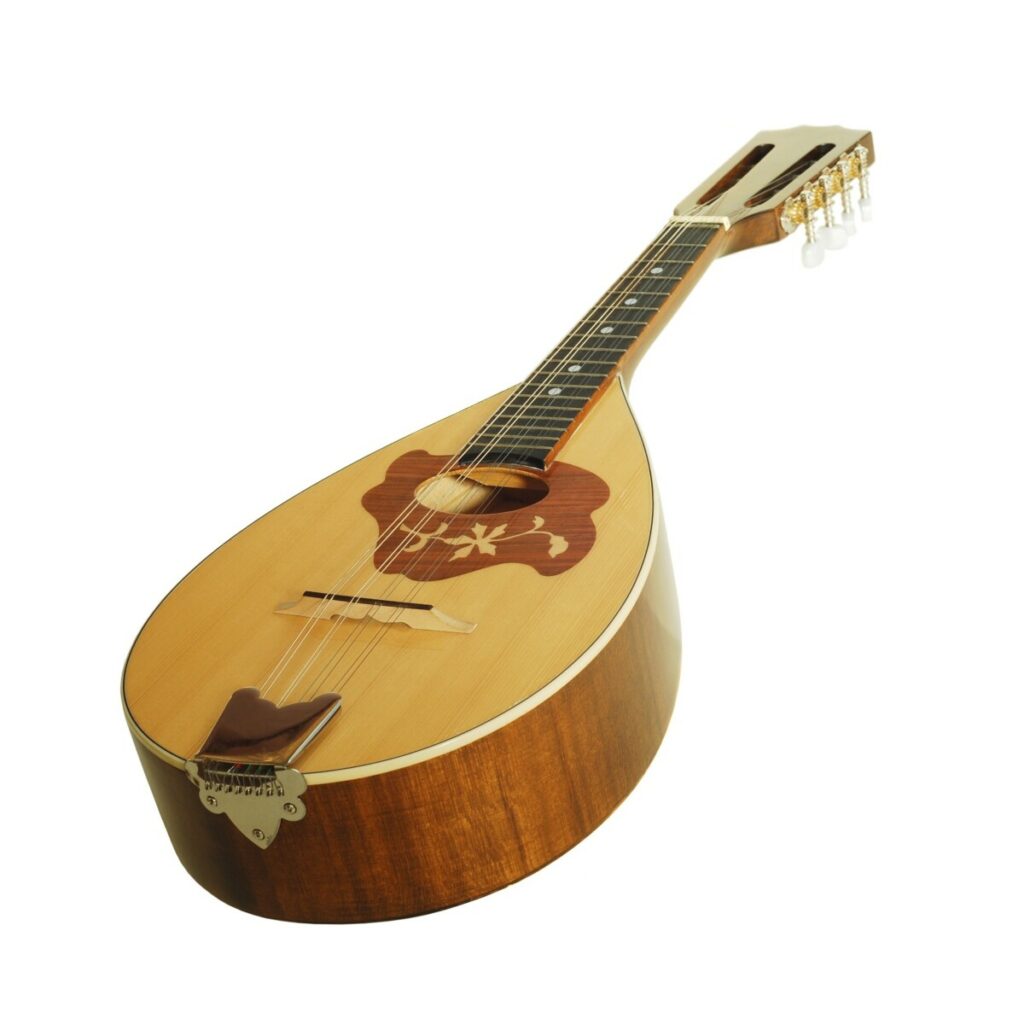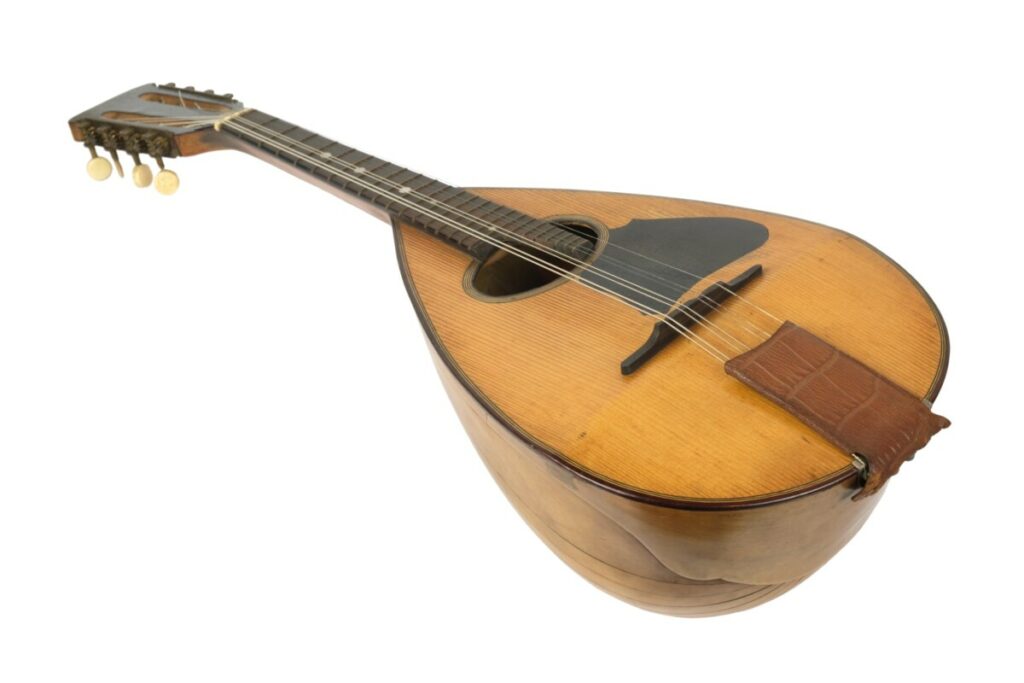Mandolin vs. Guitar: Which Instrument Strikes the Right Chord?

As you embark on your musical journey, you might find yourself weighing the pros and cons of different stringed instruments. In particular, the mandolin and the guitar are popular choices that often reach the top of budding musicians’ lists. But how do mandolins and guitars compare?
With its vast repertoire and ubiquity in popular music, the guitar provides a wide canvas for musical expression and is easier to learn initially. With its unique sound and compact size, the mandolin offers a distinctive melodious voice and can be a great choice if you’re interested in genres like bluegrass, folk, or classical music.
This article will delve deeper into the differences between the mandolin and guitar, examining their physical characteristics, sound, versatility, and the learning curve associated with each. Whether you’re a beginner picking up your first instrument or an experienced musician looking to expand your skills, this comparison should help guide your decision.
What is a Mandolin?

The mandolin is a stringed instrument that has existed for hundreds of years. While it is not quite as popular today as it has been in the past, many people still play them. They are often used to play classic and folk music and are often seen at Renaissance festivals and movies set during medieval times.
At first glance, a mandolin and a guitar look somewhat similar. They both have a wide round body that extends upward into a long narrow handle or “neck.” They both are stringed instruments with strings that are strung from the wide base up along the neck and tied off at the top.
What is a Guitar?
The guitar is an extremely popular stringed instrument. Many people play the guitar at least once during their lifetime.
The guitar is larger with a wide, rounded base shaped roughly like an oval. From this base extends the neck, which provides most of the length of the guitar.
Along this neck are the strings, which run from the top of the neck to the end of the guitar. Each guitar has 6 to 12 strings. These strings are strung over a hole cut into the base of the guitar, which amplifies the sound produced by the strings.
There are a few different types of guitars. The most common are electric and acoustic guitars. Electric guitars don’t have a hole cut out in the base to amplify sound, so those who play electric guitars must use electric amps.
The first guitars were developed in the 1500s and 1600s. These instruments were made with wood and were used by minstrels and court musicians. Over the years, the shape and number of strings changed. What we would consider the modern 6-string guitar was developed in Spain during the 1800s and quickly became the standard for guitars.
Guitars can produce a wide range of notes depending on what they are built from, the number of strings they have, and if the equipment is being used to amplify the sound being produced. This wide array of notes allows the guitar, originally used in classical and minstrel music, to be heard in almost every genre of modern music, including rock, country, folk, pop, and gospel.
5 Main Differences Between Mandolin and Guitar

A few main differences exist between the mandolin and the guitar: how they are shaped, the number of strings each instrument has, and how each instrument is tuned.
1. Physical Characteristics
Guitars and mandolins are shaped quite differently, which is one of the reasons why they sound different.
The guitar is larger, typically with six strings (although variants exist). Guitars come in various types, including acoustic, electric, and classical, each with unique characteristics and sound. The guitar’s large body and long neck make it a bit bulky, but it also allows for a wider range of notes.
The mandolin is a small, lightweight instrument, traditionally with eight strings arranged in four pairs or “courses.” Its compact size makes it convenient for travel and storage. However, the paired strings can make playing more challenging, especially for beginners.
2. Strings
Mandolins and guitars have very different strings. While both guitar and mandolin strings are typically made out of metal, mandolin strings are much thinner than guitar strings. Mandolin strings are also in pairs, while guitar strings are spaced evenly.
The biggest difference between these two instruments is how the strings are tuned and played. Guitars are tuned in fourths. Mandolins, on the other hand, are tuned in fifths. However, you can tune a mandolin with a guitar tuner, which is nice if you have both instruments but don’t want to purchase two tuners.
3. Sound and Music Styles
The guitar is known for its versatility in sound, capable of producing a wide range of tones. It can fit well into almost any musical genre, from rock and pop to jazz, blues, country, and classical music.
A guitar is a more common choice because it is more flexible as an instrument and can play along with other instruments in harmony. It can blend into the background and be at the forefront of music.
The mandolin has a bright, sweet, and penetrating sound. It’s a staple in bluegrass and traditional folk music but is also used in classical music and, more recently, in rock and pop.
These unique sounds are part of why the mandolin is more of a specialty instrument, while the guitar is one of the most popular instruments in the music industry today.
4. Learning Curve
The guitar is generally considered easier for beginners. The frets are wider apart, which can be more comfortable for beginners to learn chords and scales. However, like any instrument, mastering the guitar requires time and practice.
The mandolin can be challenging initially, particularly because of the narrow frets and the paired strings. But its smaller number of strings and simplified chord shapes can make progress faster once the basics are down.
But if you know one, you might find it much easier to play the other. Musical skills can transfer between stringed instruments.
5. Portability and Price
When considering portability and price, the mandolin has a clear advantage. Its compact size makes it easy to transport, and you can find quality beginner mandolins at a lower price than guitars. However, guitars are more common, meaning you’ll have more options to choose from, both new and secondhand.
If you are unsure which instrument you want to learn to play, talk to a music store associate, as most music stores selling guitars also sell mandolins. The associate can help you determine which instrument will be best for you.
Conclusion
Choosing between the mandolin and the guitar ultimately depends on your preferences and musical goals. If you’re looking for an instrument that’s easy to start with, portable, and suited to folk or bluegrass, the mandolin is a fantastic choice. On the other hand, if you’re drawn to a wider variety of music genres and don’t mind the initial learning challenge, the guitar might be the instrument for you.
FAQS
Can you play guitar songs on a mandolin?
Yes, you can play guitar songs on a mandolin. However, due to the different tuning and number of strings, you will need to transpose the chords and may be unable to play all guitar songs without modification.
Is a mandolin harder to play than a guitar?
Initially, a mandolin can be more challenging due to its smaller frets and paired strings. However, its simpler chord structures can progress faster once you get past the basics.
Can a mandolin be used as a travel guitar?
While a mandolin is not a guitar, its compact size makes it an excellent choice for a travel instrument.






![What Does a Pop Filter Do? [And Other Pop Filter Tips]](https://www.bythebarricade.com/wp-content/uploads/2023/04/180261067_l_normal_none-1024x683-1-768x512.jpg)